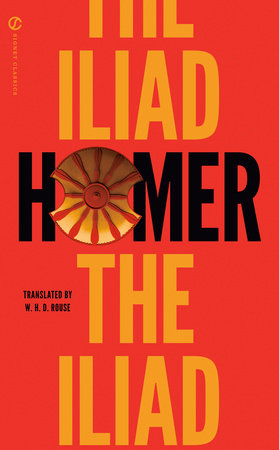For the past few years I’ve tracked all the art events that my partner and I attend together. We are avid supporters of the arts. All of them. In 2020, despite social distancing and the pandemic pandemonium, we tracked at least 109 events.
Genre/Medium
- Architecture – 1
- Art/Gallery/Museum – 20
- Audio/Sound Art – 2
- Concert – 4
- Festival/Event – 44, split among 3 different festivals
- Film/Video – 30
- Lecture/Author Talk – 6
- Literature – 1
- Museum/History – 2
- Music – 5
- Performance – 8
- Theater – 11
- Workshop – 2
That’s 136 individual works or exhibitions in total. The reason there are only 109 events tracked is because we block some things together; for example, a block of short videos during a video festival only counts as 1 event even though we may see 8 works.
The genre/medium designation is loose also, since some of the films and theater pieces were part of a festival. Forty-seven events were before quarantine (around the beginning of March); the other 89 were well under the specter of COVID-19.
I usually list my top 10 plays of the year, but since this was the (first) year of Covid, and because I saw so few live theater events, I’ll instead focus on the artists/groups who made the best of a terrible situation and still managed to offer something artistically transcendent and technologically competent. Here are my Top 14 of 2020, in no particular order:
Editor Joshua Rothes put together Sublunary Editions Presents, a live reading of original works that spanned the globe. This literary event was early on in the pandemic and put to shame a lot of traditional art groups with much larger budgets that were still scrambling to put quality work together at the end of the year. I had fully anticipated on watching only a handful of the readers across its 4½ hours, but I ended up riveted to the screen because of the utter talent of the writers gathered together.
Another early event was Cold Spring Pandemic Dream with Bird by Dean Terry and his performance art collective therefore. This live video performance on Instagram perfectly captured the surreal and uneasy mood of the early days of the pandemic.
I’ve long sung the praises of Teatro Dallas, and 2020 made me appreciate and respect them even more. They managed to early on make available online several archived projects, from an early 1990s film Frida Kahlo: A Ribbon Around a Bomb to the audio project Pizcas about child immigrant laborers. They also were able to produce original works, both in video form, like The Monster in His Labyrinth, and in a safe(r), socially-distanced live/in-person performance of A Grave Is Given Supper, based on the poetry of Dallas writer Mike Soto.
If it weren’t for Ron Athey, I’d be a much less interesting person. I’ve been a fan of his work, and his work ethic, since the early ’90s. Just by following him online across various social media platforms I knew about several things going on that I’m glad I didn’t miss, including the film Steven Arnold: Heavenly Bodies, the Johanna Went: Passion Container exhibition at The Box in Los Angeles that we caught before lockdown, the performance video of Self Obliterations I, II & III: Ecstatic, Sustained Rapture, Mortification on Vimeo, the Queer Communion book launch, and Pauline Oliveros’ Full Pink Moon produced by Opera Povera. I’m looking forward to reading Ron’s new book and hopefully seeing his retrospective later this year.
P•P•O•W Gallery curated an online exhibition of video art called Hell is a Place on Earth. Heaven is a Place in Your Head. that made explicit the connections between Reagan’s manufactured health crisis and Trump’s.
Lena Herzog collaborated with Marco Capalbo and Mark Mangini on Last Whispers: Oratorio for Vanishing Voices, Collapsing Universes, and a Falling Tree, a sound installation and meditation on silence and the human voice.
Culture Hole produced a video/performance series called Culture Hole TV that tapped into the melancholia of life in quarantine.
Mimir Chamber Music Festival had an outstanding opening night by programming musicians from Auckland, Melbourne, Berlin, and north Texas.
In July Headlands Center for the Arts presented 7 Sounds/1 Sound, a live audiovisual work-in-progress collaboration between filmmaker Sam Green and musician JD Samson.
Diamanda Galás’ Broken Gargoyles, a quadrophonic soundwork-in-progress, premiered at the Fridman Gallery and was a collaboration with sound engineer Daniel Neumann and video artist Carlton Bright. It featured photography of disfigured WWI soldiers and excerpts from poet Georg Heym’s Das Fieberspital.
Animator Don Hertzfeldt released the third episode of his World of Tomorrow series entitled The Absent Destinations of David Prime that made us feel lost all over again.Chris McKim’s art documentary Wojnarowicz: Fuck You Faggot Fucker screamed its way to the head of the class and taught us a thing or two about governmental policies of abandonment.
The San Francisco Symphony, directed by Esa-Pekka Salonen, showed us the future of symphonic music with the world premiere of Nico Muhly’s Throughline. This outstanding, creative feat was dynamically edited and visually powerful, and the rest of the music on the program—by Ellen Reid, John Adams, Kev Choice, and Ludwig van Beethoven—took us places.
Organist James McVinnie wowed us live from Concert Hall ‘Latvija’ in Ventspils, Latvia, where he performed exquisite pieces by Nico Muhly, Sufjan Stevens, Johann Sebastian Bach, Marcel Dupré, and Ferenc Liszt.

